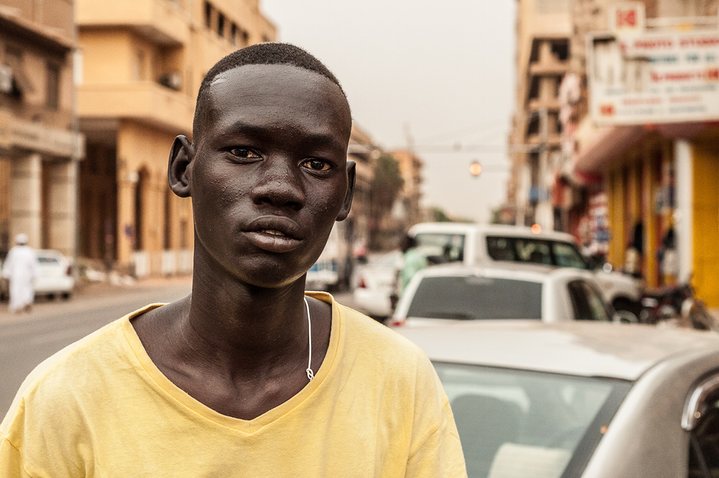Since her independence in 1956, Sudan has experienced numerous civil conflicts, most of which have led to mass slaughter and displacement of its citizens. But since the secession of South Sudan in 2011, which was preceded by the war in Darfur (2003-2010), Sudan appears to be on a new path, characterized by cultural and racial diversity.

Sudanese man posing for a portrait. The Guardian
It is this glimmer of hope that has motivated Ahmad Abushakeema, a Sudanese photographer and engineering student at Khartoum University, to capture the country’s diverse ethnicities and cultures in pictures, the Guardian reports.

Portrait of a Sudanese man by Ahmad. Twitter
Ahmad, who has lived in Sudan for nine years, says his project “1,000 Portraits from Sudan” is aimed at telling an interesting story of the wide ethnic, racial, and cultural diversity that exists in Sudan, much of which is not represented in popular cultures.
His inspiration came from the “Humans of New York” social media series, which features street portraits and interviews collected on the streets of New York. Ahmad publishes his work on social media, mainly Instagram and Tumblr.
“Some of the portraits are at random and some are taken of people by request,” he told the Guardian.
Symbol of Defiance
For many years, the Sudanese populace has been split between northerners, who are predominantly of Arab descent, and southerners, who are mainly dark-skinned.

A Sudanese lady posing for a picture. Qahwa Project
While recognizing the reality of this racial distribution, Ahmad defiantly captures the multiplicity of the current population, ignoring any political or regional boundaries that may exist.
“It doesn’t really matter if they are Sudanese or not, as long as they are a part of our society,” Ahmad says.
He has also decided to keep his subjects anonymous, arguing that what matters most is the person’s face, which represents a specific part of the modern Sudanese population.

Ahmad’s portrait of a Sudanese Muslim faithful. 500px
Ahmad hopes his project will contribute to ending the longstanding discrimination of a section of the country’s population based on skin color and ethnicity. He wants to prove that Sudan is not a monolith.
He plans to continue with this project until he hits his target of 1,000 portraits, after which he will display the images in exhibitions and museums across Africa.










